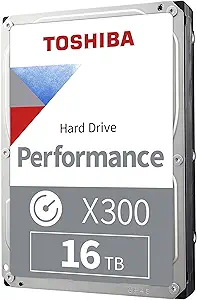Basic Info.Model NO.MD-002After-sales ServiceSupportWarranty1
YearCertificationCEConditionNewCustomizedCustomizedAlarm
FormShutdown AlarmTransport PackageWooden
BoxSpecification170cm*89cm*78cmOriginChinaHS Code8543709100Product
DescriptionProfessional CE Metal Detectors for Foil Packaged Food
Security Metal Detection Detecting TunnelWidth 400mm* Height
80mm ( Customized)Belt Height from Ground670mm (
customized)LanguageChineses-English by default(Other languages
customized)SensitivityFeΦ0.5mmSensitivity
Degree10 DegreesAlarm ModeFlap reject, Sound and Light Alarm,
Belt-stop ( and other reject devices)Input Power/
VoltageSingle-phase 220VAC or 110VAC 200WConstruction Material304
SUS ( 316 SUS available)Machine Weight160kg 7" Touch screen
with a new easy to use interface:The big 7" touchscreen,so offers
easier usability. Faster, Better Auto-Learn:With significant
improvements in signal processing, the new Auto-Learn rapidly
delivers excellent detection sensitivities out of the box and
provides more line uptime than ever before. You can then select the
product learnt from the User Interface Stop on Detect
conveyors:Stop on Detect (or belt stop alarm) conveyors are the
simplest reject conveyor available. They are normally associated
with large bulk or awkward shaped products that are placed onto the
production line by hand and typically consist of head sizes of
around 550mm x 300mm. Any product that is contaminated is removed
from the line once the alarm goes off and the belt has
stopped. Multiple reject system types are available, and the
correct choice entirely depends on the application.JINDU'S reject
types for different applications: -Air Blast - This can
consist of either a single or dual nozzle system which is designed
to be used with products that are wrapped and weigh up to
0.8kg -Pusher - The pusher is designed to be either side
or overhead the conveyor for wrapped product in rigid packaging and
is also available with heavy duty construction. If polybagged
product is used a brush strip is needed under the pusher blade to
reduce trapping. -Carriage Retract - Ideal for
continuous loose product, separate products in parallel lanes
across the belt, polybags and sachets. -Diverter /
Plough - Typically used on more delicate or higher value
products using a sweeping action to reject contaminant
products. -Power Decliner - Situated at the end of the
out the outfeed conveyor, products exit via the decliner onto
another conveyor to then be rejected.Bespoke conveyor systemsJINDU
produce a wide range of metal detector conveyor systems for a host
of bespoke food and packaging applications. Some of JINDU's recent
systems include: extra large reject bins for oversized products,
incline and decline conveyors, very high line height, dual lane
systems and much more.ApplicationsFor all foil-packed
productsJINDU has installed food metal detectors across many
different industries, having over 5,000 installed worldwide.
We have developed an extensive library of food
industry applications and case studies.Some of our case
shows: Types of ContaminantsThere are three main groups of
metallic contaminants that a food metal detector can
sense:-Ferrous-Non-Ferrous-Stainless Steel detection depends
on the magnetic or conductive properties of the
contaminant.-Ferrous metal contaminants are both magnetic and
conductive and are easily detected-Although they are not magnetic,
Non-Ferrous contaminants are good conductors and can be
detected relatively easily-Stainless Steel foreign bodies are
the most difficult to pick-up as they are usually non-magnetic and
a poor electrical conductor. The ability to detect stainless steel
is also hindered when the product is wet or has a high salt
contentIf there are other types of contaminants (glass, calcified
bone, ceramics, stone) to be detected, then an X-ray
inspection system for food will offer enhanced detection
capabilities.Where should I put a food metal detector?Metal
detectors can be used throughout the food production process in
order to protect consumers by detecting metallic contaminants and
preventing the contaminated food from ending up on retailers'
shelves. With packed products, a food metal detector can be placed
at the end of line for a final product inspection of metal
contaminants.Food metal detectors can also be used in line to
protect other machinery that is downstream. A metal detector is
normally installed before the machine to detect metal particles in
order to help prevent damage to processing equipment, which can
cause downtime and costly repairs. Types of Metal
Detector for the Food Industry:
Search Heads
Conveyor based Systems
Pipeline for Pumped Products
Vertical Fall or Gravity Feed
COMPANY INTRODUCTION Jindu
Electronic conducts ongoing research and development, specialised
manufacturing, sales and service support. Through a worldwide
network of OEM and distributor partners,Ji
Related products about Conveyor Aluminum Foil Packaging Chocolate Candy Food
-
 Waste Tyre Plastic Recycling Machinery Machine Tire Crusher Production Line Rubber Crumb Grinding Machine Equipment Tire Shredder
Waste Tyre Plastic Recycling Machinery Machine Tire Crusher Production Line Rubber Crumb Grinding Machine Equipment Tire Shredder
-
 Stretch Plastic Blowing Pet Bottle Making Blow Molding Machine Bottles Stretch Automatic Pet Bottle Blowing Machine
Stretch Plastic Blowing Pet Bottle Making Blow Molding Machine Bottles Stretch Automatic Pet Bottle Blowing Machine
-
 Waste Plastic Pet Bottle, Water Bottle Flake, PP/HDPE/LDPE PE Film Jumbo Woven Bags Plastic Crusher Machine, Plastic Crushing Washing Recycling Machine
Waste Plastic Pet Bottle, Water Bottle Flake, PP/HDPE/LDPE PE Film Jumbo Woven Bags Plastic Crusher Machine, Plastic Crushing Washing Recycling Machine
-
 Type 2 Wall-Mounted Electric Car Charging Station 7kw /11 Kwelectric Vehicle Charging Station Home Wallbox AC EV Charger Single Phase or 3three Phase
Type 2 Wall-Mounted Electric Car Charging Station 7kw /11 Kwelectric Vehicle Charging Station Home Wallbox AC EV Charger Single Phase or 3three Phase
-
 G-View G12W Wholesale Auto Car LED Headlight Bulb High Power H13 H11 9005 H7 H4 Car LED Headlights LED Car Lights
G-View G12W Wholesale Auto Car LED Headlight Bulb High Power H13 H11 9005 H7 H4 Car LED Headlights LED Car Lights
-
 New Design Porcelain Round Plates Dinner Set for Wedding and Banquet
New Design Porcelain Round Plates Dinner Set for Wedding and Banquet
-
 China 2023 New Design Super Soft 100% Polyester Microfiber Knitted Oversized Decoration Hoodie Blanket
China 2023 New Design Super Soft 100% Polyester Microfiber Knitted Oversized Decoration Hoodie Blanket
-
 Handmade Art Creative Materials Thickened White Paper Cup DIY Disposable Handmade Colored Paper Cup
Handmade Art Creative Materials Thickened White Paper Cup DIY Disposable Handmade Colored Paper Cup






